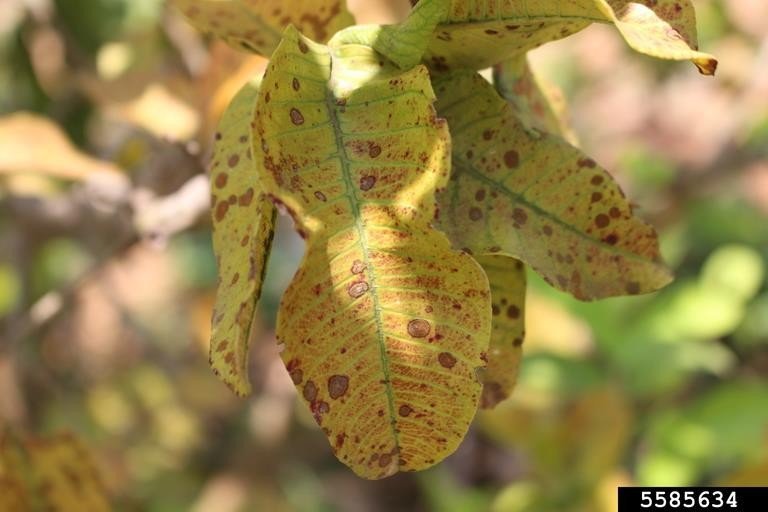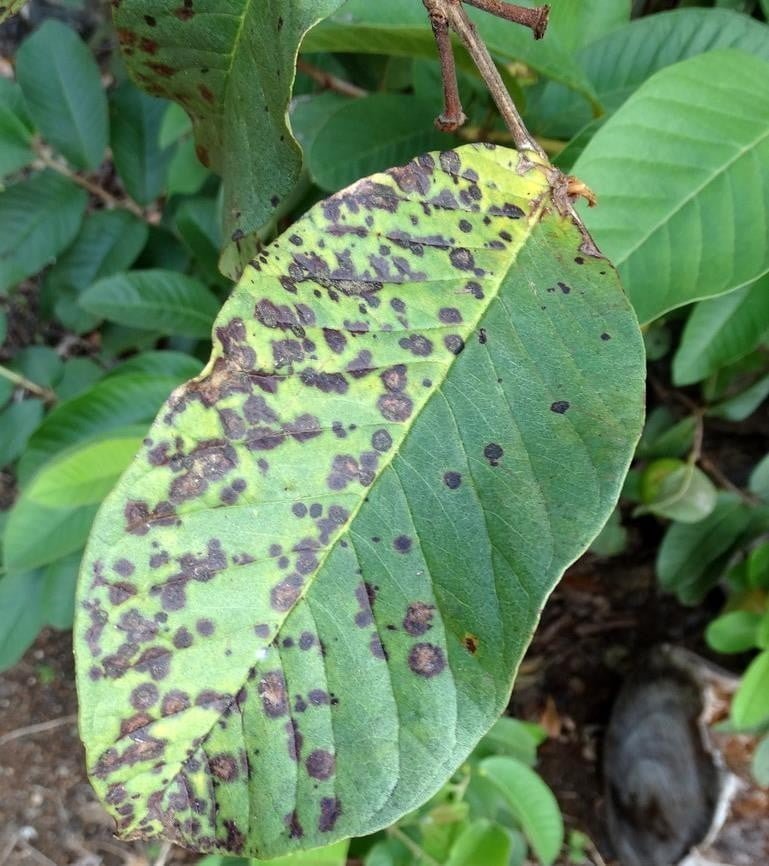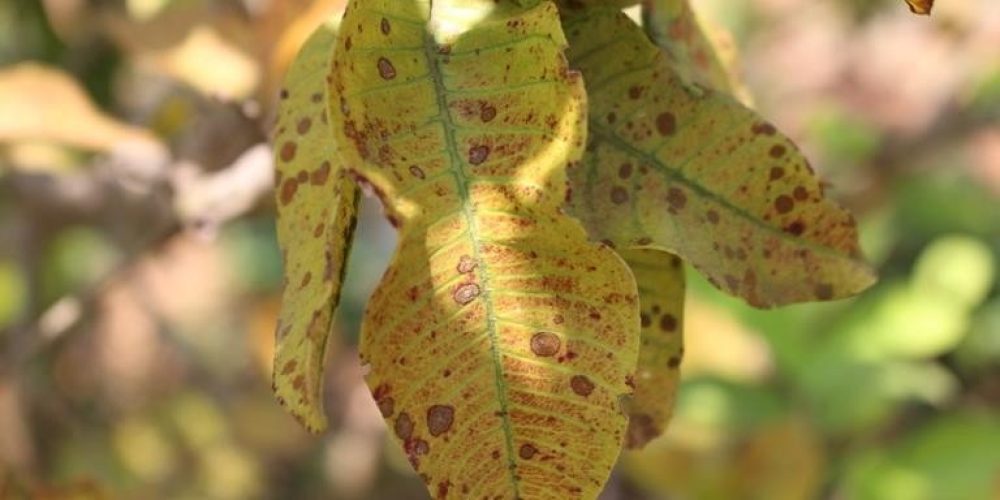Table of contents of the article
ToggleAlgal spotting on Guava Leaves is a fungal disease that greatly affects the health and productivity of the guava tree. And in this article on your site botanist WORLD of PLANTS, we will shed light on the symptoms of this disease and how to control it to ensure the preservation of crop health and quality.
Symptoms of algal spotting disease on guava leaves
- English name: Spot Leaf Algal Guava
- Scientific name: Cephalurus versinus virescens Cephaleuros
- Type of diseaseAlgae disease :
- Family: Trentepohliaceae Trentepohliaceae
Algal spotting on guava leaves appears in the form of raised, velvety green or reddish-brown spots or spots on the upper surfaces of guava leaves. These spots can gather and cover a significant part of the leaf surface, which leads to premature leaf shedding. In severe cases, algae growth can also occur on the stems and fruits, causing discoloration and deformation.



Causes of algal spotting disease on guava leaves
Guava Moss leaf spot is caused by the parasitic green algae virescens Cephaleuros, which can infect a wide range of plant species.
Conditions for the spread of algal spotting disease on guava leaves
The algae pathogen thrives in warm, humid environments with high relative humidity and frequent precipitation or top irrigation. Algae produce motile zoospores that can be spread by wind, rain, or water spray.
The course of algal spotting disease on guava leaves
The algae pathogen can overwinter as dormant cells or spores on infected plant residues or in the soil. When environmental conditions are favorable, spores or cells germinate and produce mobile zoospores that can infect sensitive host tissues. Once established, the algae forms a dense mat of filaments on the leaf surface, extracting nutrients from the host and causing tissue damage. Algae can produce additional zoospores throughout the growing season, which facilitates further propagation.
Losses of algal spotting disease on guava leaves
Severe infection with Moss leaf spots can lead to premature leaf shedding, reduced photosynthesis, stunted plant growth, which ultimately affects the yield and quality of fruits.
Strategy for controlling algal spotting disease on guava leaves
An integrated approach involving cultural practices, pruning and chemical control measures is recommended for guava Moss leaf spot Management.
Preventive measures for algal spotting disease on guava leaves
Ensure good air circulation in the orchard, avoid excessive watering, remove and destroy the remains of infected plants.
Organic / chemical control of algal spotting disease on guava leaves
As for organic control, copper-based fungicides (such as copper hydroxide and copper sulfate) or potassium bicarbonate solutions can be effective when applied prophylactically. Chemical fungicides containing active ingredients such as chlorothalonil, mancozeb or propiconazole can also be used according to the label instructions to control algae growth.
In conclusion, we would like to note that we, at the world of plants website, offer you all the necessary services in the world of plants, we provide all farmers and those interested in plants with three main services::-
- Artificial intelligence consulting service to help you identify diseases that affect plants and how to deal with them.
- Blog about plants, plant diseases and care of various crops ... You are currently browsing one of her articles right now.
- An application that provides agricultural consultations to clients, as well as a service for imaging diseases and knowing their treatment for free – Click to download the Android version from Google Play Store، Click to download the IOS version from the Apple App Store.




